Freemasonry has a fascinating and convoluted history, made more so by some of the more interesting speculative interpretations, one of which is the belief that the fraternity originated in ancient Egypt.
Whilst this is somewhat contentious, the influence of this remarkable civilisation is something many people have wanted to add to the mix of Western life.
The romance and mystery surrounding the ancients had been an ongoing obsession; from the Renaissance to the burgeoning ‘new age’ spirituality of the 18th century onwards, and Freemasonry was not immune to its charm.
In the beginning
The idea that somehow Freemasonry could be linked to the ancient Egyptians first came to light in the Halliwell Manuscript, also known as the Regius Poem.
It is known as the Oldest of the Charges and was originally dated c.1390 (although it was later dated to around 1440 by Edward Augustus Bond, the curator of the British Museum manuscripts, which has been confirmed by modern analysis).
It consists of 64 vellum pages of rhyming couplets, written in Middle English, which relate the tale that Euclid learnt geometry in Alexandria, taught it to the children of the nobility and “called it masonry”.
This learning then spread to “divers lands” and made its eventual way to England during the reign of King Athelstan (925-939).
It goes on to say how the masons of England came to the king for guidance as to their craft governance and how Athelstan and his nobles put together the fifteen articles and points for their rule.
The origins of the manuscript are uncertain, but it was donated to the British Museum in 1757 by King George II.
Its name is derived from James Halliwell-Philips, a non-Mason, who in 1838, delivered a paper on “The Early History of Freemasonry in England”.
In 1840 he published the paper, including a transcript of the Regius Poem, and from that time, the manuscript bore his name.
Later, in Scotland, statutes appeared that echoed the possibility of Egyptian origins due to what appear to be Hermetic/alchemical references.
James Stevenson Curl, in his The Egyptian Revival: Ancient Egypt as the Inspiration for Design Motifs in the West (Routledge 2005) states:
Protestant countries, notably Scotland, seem to have developed Hermetic notions which had an important influence on the development of Freemasonry.
Legends of the Craft hold that Freemasonry is as old as the art and science of architecture, and so there are debts to Ancient Egypt, to great works such as the Temple of Solomon in Jerusalem, and to mediaeval European cathedrals.
The transition from Craft Guilds of Operative Masons to organisations concerned with what Dr Yates has called ‘the moral and mystical interpretation of building’ and thence to ‘a secret society with esoteric rites and teaching’.
The ‘Egyptian’ Rites
However, probably the largest influence on Freemasonry with regards to its possible Egyptian roots were the Free Thinkers of the Age of Enlightenment.
In Europe, during the mid-to late 1700s, a revival of Renaissance hermeticism and alchemy became de rigueur – with irregular off-shoots of Masonry sprouting across the continent.
Much of the Egyptian Revival Freemasonry, spirituality and theory was in fact merely a mixture of Christianity, Judaism, Kabbalah and alchemy – none of which had any proven basis in the roots of ancient Egypt and were more from a romanticised notion, than factual base.
This core group of European Masons were proponents of the purported esoteric origin of the Order.
They added Freemasonry to the melting pot of traditions, religions and mystical thought that had been brewing since the Renaissance; including the idea that alchemy and the hermetic arts had filtered down from the teachings of ancient Egypt.

Interpretations of Egypto-Masonic links in The Hidden Life in Freemasonry, C. W. Leadbeater, 1926
The concept of ancient Initiatory or Mystery Schools was too enticing to pass up and it became the focus point of various new Masonic rituals with a supposedly Egyptian theme.
The combination of theurgy (the invocation of a deity) and Freemasonry was present in various new rituals: the Rite of Misraïm (1738), Martinez de Pasqually’s Order of Élus Coëns (1767), Cagliostro’s Egyptian Rite (1784) and later a variant on Misraïm, the Rite of Memphis (1838), which further morphed into the Ancient and Primitive Rite of Memphis-Misraïm in 1889.
There was no real connection to ancient Egypt within any of these rituals – the etymology of many of the ‘Egyptian’ words are often portmanteaus or corruptions of existing mystical phrases or in other cases, inventions by the authors.
This is further compounded when one considers the language of hieroglyphs had not yet been deciphered until much later via the crucial breakthroughs of Thomas Young (1814) and Jean-François Champollion (1822), and even then, were not widely published.
From these facts, one can logically surmise that at the time most of these rituals were written, they contained no evidence-based wisdom of the ancients.
Much of the content had its roots in a hybridised blend of Biblical, Kabbalistic or alchemical symbolism; the Rite of Memphis even managed to combine elements from Templarism and Chivalry with Egyptian and alchemical symbolism.

Seal of Martinès de Pasqually
These quasi-Masonic Orders were incredibly influential amongst the occultist and more spiritual Freemasons and by the fin de siècle and the early 1900s, the New Age had well and truly dawned; the melting pot on the verge of boiling over.
From the traditional history of Regular Freemasonry, a many-headed hydra had been created; one that would invariably lead Freemasonry, as an organisation, into centuries of ill-repute.
To add insult to injury, Aleister Crowley, the figure later dubbed ‘the wickedest man in the world’ would attach himself to the perimeters of Freemasonry.
From the fusing of the two Rites of Misraïm and Memphis and the ensuing intervention of John Yarker and Theodor Reuss (1855-1923), the rites metamorphosed once again into the quasi-Masonic mixed gender Ordo Templi Orientis (OTO).
The Hermetic Order of the Golden Dawn was another short-lived esoteric-Masonic -styled Order founded by Freemasons William Wynn Westcott (1848–1925) and Samuel Liddell MacGregor Mathers (1854–1918), both members of the Societas Rosicruciana in Anglia (S.R.I.A.).
Aside from the rituals, the European Freemasons lapped up anything that hinted of Egypt – Jean (Abbé) Terrasson’s novel Life of Sethos, Taken from Private Memoirs of the Ancient Egyptians (1731) was an elaborate work of fictional fantasy and was a source of inspiration for Mozart’s opera The Magic Flute, which combined both Masonry and ancient Egyptian symbolism.
Mozart also wrote incidental music for Thamos, King of Egypt, a play by Tobias Philipp, Baron von Gebler.
Count Cagliostro, creator of the Egyptian Rite and self-styled ‘Grand Cophta’, held seances in his Egyptian themed salon in Paris.
Goethe (1749-1832) even wrote a play about it all in 1792 – entitled Der Gross-Cophta (The Grand Copt).
Design for The Magic Flute: The Hall of Stars in the Palace of the Queen of the Night, Act 1, Scene 6
Credit: The Elisha Whittelsey Collection, The Elisha Whittelsey Fund, 1954.
IMAGE LINKED: The Metropolitan Museum of Art – Open Access PD
Egyptian motifs and symbolism were also an influence depicted in Masonic jewels. There are some beautiful examples of elaborate designs held by the Museum of Freemasonry in London and which featured in their 2019 exhibition Bejewelled: Badges, Brotherhood and Identity
Freemasons and Follies
Between 1798-1801, Napoleon began his French Campaign in Egypt and Syria.
The campaign included not only officers but also artists, scientists, and other savants – the ensuing publication of the Description de l’Égypte first appeared in 1809 and continued until the final volume in 1829.
This extraordinary work aimed to comprehensively catalogue all known aspects of ancient and modern Egypt, as well as its natural history.
A collaborative work that involved about 160 civilian scholars and scientists, 2000 artists and technicians, including 400 engravers, who would later compile it into a completed text.
It was a pivotal point in the influence of ancient and modern Egypt upon the West and with the eventual discovery and translation of the Rosetta Stone, a far more evidence-based understanding of this enigmatic and unfathomable culture began in earnest.
Another figure to bring the ancients to Europe (quite literally) was the former strongman turned amateur archaeologist Giovanni Battista Belzoni (1778-1823).
Belzoni was a Freemason; his place of initiation is unknown, but he was recorded as joining the Royal Arch in Cambridge and Knights Templar in Norwich, around 1821.
One of his greatest achievements in Egypt was the discovery of the tomb of Seti I (KV17). Belzoni made copious sketches and notes of his work and he made reference to what he believed were Masonic signs and symbols within the tomb symbols within the tomb.
These notes were included in his and his wife Sarah’s work, Narrative of the operations and recent discoveries within the pyramids, temples, tombs, and excavations, in Egypt and Nubia (1820).
During 1820 and 1821 Belzoni exhibited facsimiles of the tomb of Seti I, at the Egyptian Hall, Piccadilly, London – the hall had been built in Egyptian Revival style by William Bullock to house his collection of antiquities and to exhibit the finds of others.

Sir John Soane’s House and Museum: the Belzoni Chamber at basement level, showing the sarcophagus of Seti I. Engraving.
IMAGE LINKED: Wellcome Collection. Attribution 4.0 International (CC BY 4.0)
Cleopatra’s Needle – saved by a Freemason

Raising Cleopatra’s Needle 1878
IMAGE LINKED: Wikimedia. Attribution 4.0 International (CC BY 4.0)
The obelisk known as ‘Cleopatra’s Needle’ was gifted to George IV in 1820 by Pasha Mohamed Ali.
However, the British, although sincere in their appreciation for the gift, rejected the transportation costs and the obelisk remained in Alexandria where it had lain since c. 15 BC.
It was the intervention of Freemason Sir William James Erasmus Wilson (1809-1884), that led to the obelisk making its final, somewhat perilous, journey to England.
The foundation stone was made by master stone mason William Henry Gould (1822–1891) and it was laid with Masonic ceremony.
Finally, on 12 September 1878 the obelisk was raised on the Victoria Embankment in London. The final cost to Sir Wilson was £10,000.
The obelisk is flanked by two faux-Egyptian sphinxes, which ironically were placed facing the wrong way – instead of guarding the monument, they are looking at it!
The symbolism of the sphinx is that of a guardian and in ancient Egypt there were often entire avenues of sphinxes leading up to a temple, or temples, for example, the linking avenue between Karnak and Luxor temples.

The western side of Cleopatra’s Needle in the City of Westminster, London. By Ethan Doyle White
IMAGE LINKED: Wikimedia. Attribution 4.0 International (CC BY 4.0)
Freemasonry adopted this icon, especially in the Art Deco period of the early 1900s and there are many examples of Masonic Halls/Temples flanked by varying representations of Egypto-Greek sphinxes.
Another prominent obelisk to have been erected is not of Egyptian origin but was designed to be equally as impressive.
The Washington Monument, situated on the National Mall in Washington DC, was constructed between 1848 and 1885 to commemorate the first President of the United States, George Washington; himself a prominent Freemason.
In true American style, the designers attempted to outdo the magnitude of ancient Egyptian obelisks by creating what was the tallest structure in the world – a mighty 554 feet, 7 11⁄32 inches (169.046 m) tall – until 1889 when it was trumped by the erection of the Eiffel Tower.
The cornerstone of the Memorial was laid on 4 July 1884 with great ceremony and was apparently ‘pronounced sound after a Masonic ceremony using George Washington’s Masonic gavel, apron and sash, as well as other Masonic symbols’.

The Washington Monument almost complete around 1884
By Unknown author or not provided – U.S. National Archives and Records Administration,
IMAGE LINKED: Wikimedia. Attribution 4.0 International (CC BY 4.0)
Egyptian themed Masonic Buildings and Temples
The Egyptian Revival encompassed not only architecture but also furniture, ceramics and jewellery.
It was a fashion that ebbed and flowed over the course of three centuries and none more so than the Art Deco period, which coincided with the discovery of the tomb of Tutankhamun in 1922, which influenced another wave of Egyptomania.
Integral to the somewhat stark and angular Art Deco style, Egyptian motifs such as sphinxes, lotus columns, pyramids and obelisks were back in fashion and this was once again reflected in Freemasonry, this time in a monumental way.
There are some stunning representations of Egyptian Revival style manifest in Masonic Halls and Temples across the globe. Some examples are as follows:

Interior of the Temple Maçonnique des Amis Philanthropes in Brussels, Belgium. By Davidh820
IMAGE LINKED: Wikimedia. Attribution 4.0 International (CC BY 4.0)
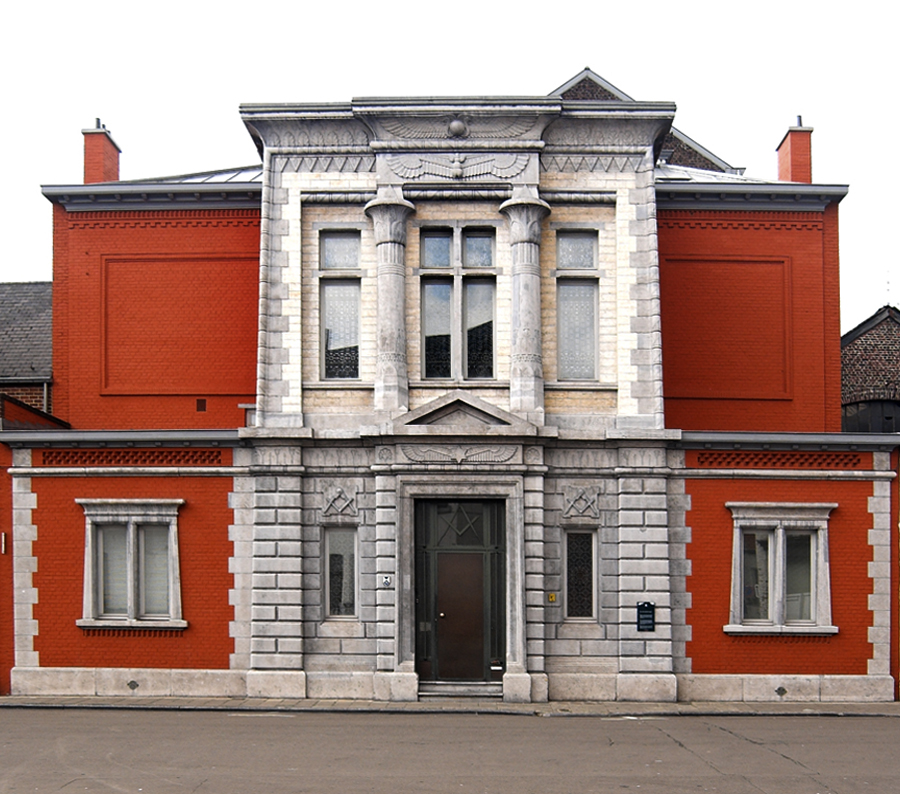
Masonic lodge in Mons, Belgium
IMAGE LINKED: Wikimedia. Attribution 4.0 International (CC BY 4.0)

The Scottish Rite Temple (1921) in Mobile, Alabama. By Altairisfar
IMAGE LINKED: Wikimedia. Attribution 4.0 International (CC BY 4.0)
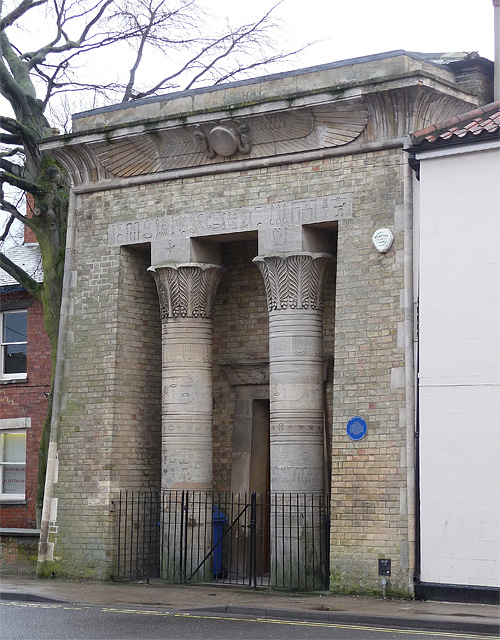
Freemasons’ Hall, Boston, UK. – Photo by Stephen Richards
IMAGE LINKED: Wikimedia. Attribution 4.0 International (CC BY 4.0)
The Egyptian Room, Petersham NSW

Egyptian Room, Petersham, New South Wales, USGCNSW.
IMAGE LINKED: Wikimedia. Attribution 4.0 International (CC BY 4.0)

Egyptian Room, Royal Arch Temple By Stewart Watters – Copyright State of New South Wales and Office of Environment and Heritage 2019
IMAGE LINKED: Wikimedia. Attribution 4.0 International (CC BY 4.0)
One of the most stunning examples of Egyptian Revival in Freemasonry is the Egyptian Room at the United Supreme Grand Chapter of Mark and Royal Arch Masons of NSW & ACT in Petersham, New South Wales.
The history of the Egyptian Room reads:
Royal Arch Freemasonry in NSW originated from Irish, English and Scottish Freemasonry, each of which established separate Orders during the 1800s.
From the 1880s, ten attempts were made to unify the various Royal Arch Orders without success. It was not until 1980 – and the eleventh attempt – that unification was achieved with the Consecration and Dedication of the United Supreme Grand Chapter (USGC)…
The showpiece of the Order, the Egyptian Room, was originally incorporated in 1927 in the Royal Arch Temple built in College Street Sydney.
This building stood until late in the 1960’s and after being sold and before demolition the focal point of the Egyptian Room, the frieze, was dismantled and stored until re-erected at the new Royal Arch centre at Petersham in 1977.
The frieze depicts certain scenes or vignettes from the Scroll of Ani dating from the 18th Dynasty; The scroll, a papyrus roll 23.78 metres long and 381 mm wide, was found at Thebes and purchased by the late Egyptologist Sir Wallis Budge in 1888.
The Scroll, which is now in the British Museum in London, depicts in pictorial form, and by text, the author’s version of the life hereafter based on ancient beliefs.
Another feature in the Egyptian Room is the funerary stele, which dominates one of the walls of the room and dates from the 20th Dynasty.
The vision of leaders of the Order in the early 1920s in creating the Egyptian Room and the engagement of Rayner Hoff to sculpt the vignettes has left a lasting legacy, which is classified by the National Trust.
Rayner Hoff was himself a Freemason and later became famous for his work on the Anzac Memorial in Hyde Park in Sydney.
Text about the Petersham Egyptian Room © The United Supreme Grand Chapter of Mark and Royal Arch Masons of NSW & ACT – reproduced with kind permission. For more information about the Order, and the Egyptian Room, visit https://usgcnsw.org.au/
Article by: Philippa Lee. Editor

Philippa Lee (writes as Philippa Faulks) is the author of eight books, an editor and researcher.
Philippa was initiated into the Honourable Fraternity of Ancient Freemasons (HFAF) in 2014.
Her specialism is ancient Egypt, Freemasonry, comparative religions and social history. She has several books in progress on the subject of ancient and modern Egypt. Selection of Books Online at Amazon
Recent Articles: Esoteric Masonry
 Explore the multifaceted concept of the Divine across various cultural and religious perspectives. Delve into the intriguing deliberations on the Great Architect, Demiurge, and their roles in shaping our understanding of the cosmos, blending philosophical, theological, and metaphysical insights into a rich tapestry of human spirituality. |
 Unveiling the Mysteries: Explore the Enigmatic World of Rosicrucianism! Dive into the fascinating origins and teachings of the Rosicrucian tradition, shaped by the mythical figure Christian Rosenkreuz. Discover the secrets of alchemy, spiritual transformation, and esoteric knowledge. Unlock the hidden wisdom that has captivated seekers for centuries. Unleash your inner mystic today! |
 An Esoteric Interpretation of the Holy Royal Arch Delving into the profound mysteries of the Holy Royal Arch, Matt DA Fletcher offers an esoteric interpretation that challenges the conventional understanding of Freemasonry. While Craft Masonry is clear in its teachings, the Royal Arch remains an enigma for many. Fletcher's exploration uncovers the symbolic and philosophical depths of this degree, revealing its significance in the Mason's journey towards reintegration with the Creator. |
 Stoicism, Freemasonry, and the Modern Man Discover how the ancient wisdom of Stoicism can enrich Freemasonry and modern life. Dr. Chacón-Lozsán Francisco M.˙.M.˙. explores Stoic principles like virtue, resilience, and inner peace, offering practical insights for today's challenges. Learn how these timeless teachings can foster personal growth, ethical conduct, and emotional stability. |
 Explore the evolution of Masonic rites with the Universal Rite, a modern adaptation of the Ancient and Accepted Scottish Rite. Discover how it integrates contemporary principles, promotes intercultural dialogue, and ensures the timeless values of Freemasonry remain relevant in today's world. |
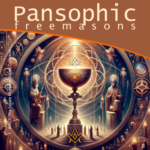 Unveil the secrets of Pansophic Freemasonry, a transformative journey through the ancient mystical traditions. Delve into the sacred realms of Rosicrucianism, Templar wisdom, Kabbalah, Gnosticism, and more. Discover the Graal, the sacred Grail that connects all esoteric paths. Embrace a holistic spiritual quest that reveals the profound mysteries of self and the universe. |
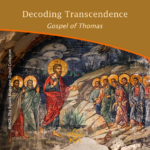 Dive into a spiritual journey where self-awareness is the key to enlightenment. The Gospel of Thomas and Masonic teachings converge on the profound truth that the path to transcendent wisdom lies within us. Embrace a diversified understanding of spirituality, emphasizing introspection as the gateway to a universally respected enlightenment. Explore, understand, transcend. |
 Philosophy the Science of Estimating Values Philosophy is the science of estimating values. The superiority of any state or substance over another is determined by philosophy. By assigning a position of primary importance to what remains when all that is secondary has been removed, philosophy thus becomes the true index of priority or emphasis in the realm of speculative thought. The mission of philosophy a priori is to establish the relation of manifested things to their invisible ultimate cause or nature. |
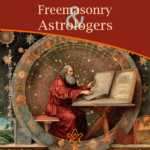 Unlocking the Mysteries: The Surprising Connection Between Freemasonry and Astrologers Revealed! Delve into the intriguing world of Freemasonry and explore its ties to astrological practices. Discover how these two distinct realms intersect, offering a fascinating glimpse into the esoteric interests of some Freemasons. Uncover the hidden links and unravel the enigmatic bond between Freemasonry and astrologers! |
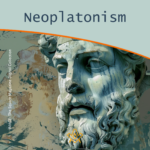 Neoplatonism, a philosophy with profound influence from the 3rd to the 6th century, merges Platonic ideals with Eastern thought, shaping Western and Middle-Eastern philosophy for two millennia. It emphasizes the unity of the individual with the supreme 'One', blending philosophy with theology and impacting major religious and philosophical movements, including Christianity and Islam. |
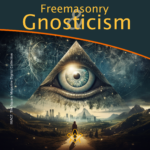 The enigmatic allure of Freemasonry's ancient rituals and Gnosticism's search for hidden knowledge capture the human spirit's endless quest for enlightenment. Between the stonemason's square and the Gnostic's divine spark lies a tantalizing intersection of philosophy, spirituality, and the pursuit of esoteric wisdom. Both traditions beckon with the promise of deeper understanding and moral elevation, inviting those who are drawn to unravel the tapestries of symbols and allegories. Whether through the fellowship of the lodge or the introspective journey of the soul, the paths of Freemasonry and Gnosticism represent a yearning to connect with something greater than ourselves—an impulse as old as time and as compelling as the mysteries they guard. |
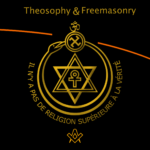 Embark on a journey through time and spirituality with our in-depth exploration of the Theosophical Society's Seal. This ancient emblem, rich with symbols, bridges humanity with the cosmos, echoing through the world's great faiths and diverse cultures. Our paper delves into the six mystical symbols, untangling their profound meanings and tracing their presence in historic art worldwide. Unaffiliated with worldly movements, these symbols open a window to esoteric wisdom. We also probe potential parallels with Freemasonry, seeking threads that might connect these storied organizations. Join us in unveiling the universal language of the spirit encoded within this enigmatic Seal. |
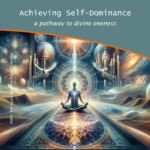 Discover the pathway to divine oneness through the concept of self-dominance. This thought-provoking essay explores the profound connection between self-control, spiritual growth, and achieving unity with the divine essence. With an interdisciplinary approach, it offers practical steps towards expanding consciousness and deepening our understanding of the divine. |
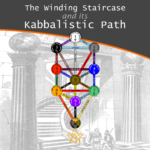 The Winding Staircase and its Kabbalistic Path The Winding Staircase in freemasonry is a renowned symbol of enlightenment. In this article, we explore its connection to Kabbalistic thought and how it mirrors the inner growth of a candidate as he progresses throughout his Masonic journey. From faith and discipline in Binah, to strength and discernment in Geburah, and finally to victory and emotional intuition in Netzach, each step represents a crucial aspect of personal development. Join us as we delve into the esoteric meanings of this powerful symbol. |
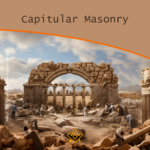 Unravel the mystic origins of Capitular Masonry, a secretive Freemasonry branch. Explore its evolution, symbolic degrees, and the Royal Arch's mysteries. Discover the Keystone's significance in this enlightening journey through Masonic wisdom, culminating in the ethereal Holy Royal Arch. |
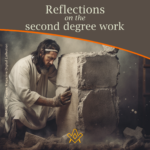 Reflections on the Second Degree Work Bro. Draško Miletić offers his reflections on his Second Degree Work – using metaphor, allegory and symbolism to understand the challenges we face as a Fellow Craft Mason to perfect the rough ashlar. |
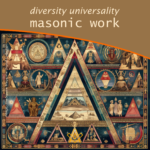 Diversity and Universality of Masonic Work Explore the rich tapestry of Masonic work, a testament to diversity and universality. Uncover its evolution through the 18th century, from the stabilization of Symbolic Freemasonry to the advent of Scottish rite and the birth of Great Continental Rites. Dive into this fascinating journey of Masonic systems, a unique blend of tradition and innovation. Antonio Jorge explores the diversity and universality of Masonic Work |
 Nonsense as a Factor in Soul Growth Although written 100 years ago, this article on retaining humour as a means of self-development and soul growth is as pertinent today as it was then! Let us remember the words of an ancient philosopher who said, when referring to the court jester of a king, “It takes the brightest man in all the land to make the greatest fool.” |
 Freemasonry: The Robe of Blue and Gold Three Fates weave this living garment and man himself is the creator of his fates. The triple thread of thought, action, and desire binds him when he enters into the sacred place or seeks admittance to the Lodge, but later this same cord is woven into the wedding garment whose purified folds shroud the sacred spark of his being. - Manly P Hall |
 By such a prudent and well regulated course of discipline as may best conduce to the preservation of your corporal and metal faculties in the fullest energy, thereby enabling you to exercise those talents wherewith god has blessed you to his glory and the welfare of your fellow creatures. |
 Jacob Ernst's 1870 treatise on the Philosophy of Freemasonry - The theory of Freemasonry is based upon the practice of virtuous principles, inculcating the highest standard of moral excellence. |
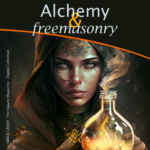 Alchemy, like Freemasonry, has two aspects, material and spiritual; the lower aspect being looked upon by initiates as symbolic of the higher. “Gold” is used as a symbol of perfection and the earlier traces of Alchemy are philosophical. A Lecture read before the Albert Edward Rose Croix Chapter No. 87 in 1949. by Ill. Bro. S. H. Perry 32° |
 The spirit of the Renaissance is long gone and today's globalized and hesitant man, no matter ideology and confession, is the one that is deprived of resoluteness, of decision making, the one whose opinion doesn't matter. Article by Draško Miletić, |
 A Mason's Work in the First Degree Every Mason's experiences are unique - here writer and artist Draško Miletić shares insights from his First Degree Work. |
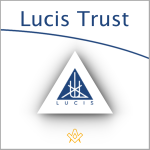 Initiation and the Lucis Trust The approach of the Lucis Trust to initiation may differ slightly to other Western Esoteric systems and Freemasonry, but the foundation of training for the neophyte to build good moral character and act in useful service to humanity is universal. |
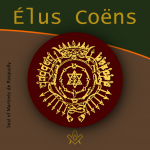 Who were the mysterious 18th century Élus Coëns – a.k.a The Order of Knight-Masons Elect Priests of the Universe – and why did they influence so many other esoteric and para-Masonic Orders? |
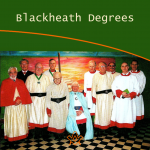 Bro. Chris Hatton gives us his personal reflections on the history of the 'house at Blackheath and the Blackheath Orders', in this wonderful tribute to Andrew Stephenson, a remarkable man and Mason. |
 Book Review - Cagliostro the Unknown Master The book review of the Cagliostro the Unknown Master, by the Editor of the book |
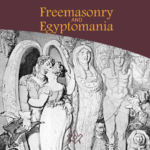 We explore fascinating and somewhat contentious historical interpretations that Freemasonry originated in ancient Egypt. |
 Is Freemasonry esoteric? Yes, no, maybe! |
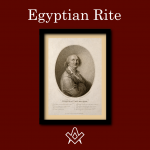 Egyptian Freemasonry, founder Cagliostro was famed throughout eighteenth century Europe for his reputation as a healer and alchemist |
masonic knowledge
to be a better citizen of the world
share the square with two brothers

click image to open email app on mobile device







